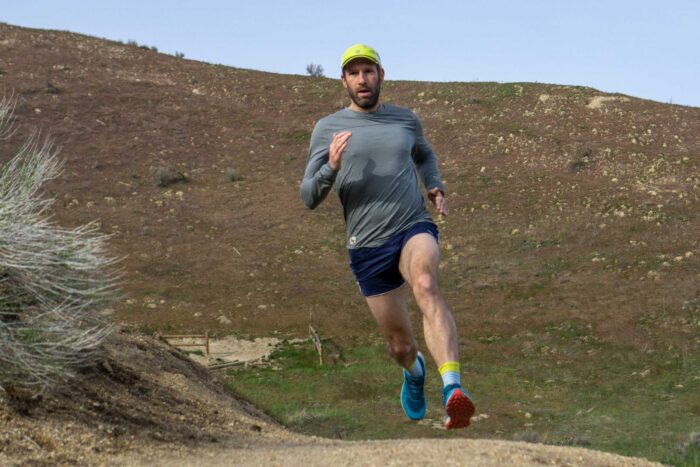On the heels of its first purpose-built running shoe, the Dasher, Allbirds makes marked improvements to woo more serious runners into its casual-looking kicks.
I jumped on the chance to review Allbirds’ first Dasher running shoe in 2020 because the brand’s implacable marketing campaign, broadcast on almost every podcast I listened to, had me convinced it was the real deal.
Knit wool uppers, natural materials throughout, and a commitment to sustainability all sounded like a great product. But in the outdoors space, there is no shortage of great commitments to sustainability, nor great marketing to back it up. The real test was whether this burgeoning brand was serious about outfitting real runners.

And after testing, the answer was a resounding, sorta. The original Allbirds Knit Dasher was indeed a comfy shoe, but it was evident that fans of HOKA ONE ONE, Altra, Brooks, and other running-first shoe brands would not become wholesale converts. It just didn’t feel like a running shoe.
Last month, Allbirds set out to change that with the Dasher 2.0. The brand claimed improved fit and lighter weight, verified “over thousands of miles by almost 100 amateur and professional athletes” to back it up.
So once again, I hopped on the chance to become a believer myself. I’ve been running in the Dasher 2.0 for 2 weeks, logging about 40 miles to get a feel for what’s new and how it performs.
In short: Allbirds backs up its promise of improved fit and lighter weight. And it does so without sacrificing the sustainability commitments it’s built on. The shoe suffers less heel slip and offers more support than its predecessor, providing more confident and committed strides.
Very serious runners may still opt for the proven brands, but anyone who runs casually for fitness (think under 25 miles per week) may be surprised at the lasting comfort and steady performance of the Dasher 2.0.
Allbirds Dasher 2.0 Review
Out of the box, you might be hard-pressed to see the difference between the Dasher 2.0 and its predecessor. They both carry Allbirds’ trademark 8 jumbo-eyelet lacing and cozy knit appearance.

Gentle Sole

Allbirds Tree Dasher 2.0 Specs
Allbirds Tree Dasher 2.0
- Weight: 10.3 oz. (men’s 9)
- Drop: 7mm (22.5mm-15.5mm heel-toe)
- Price: $135









